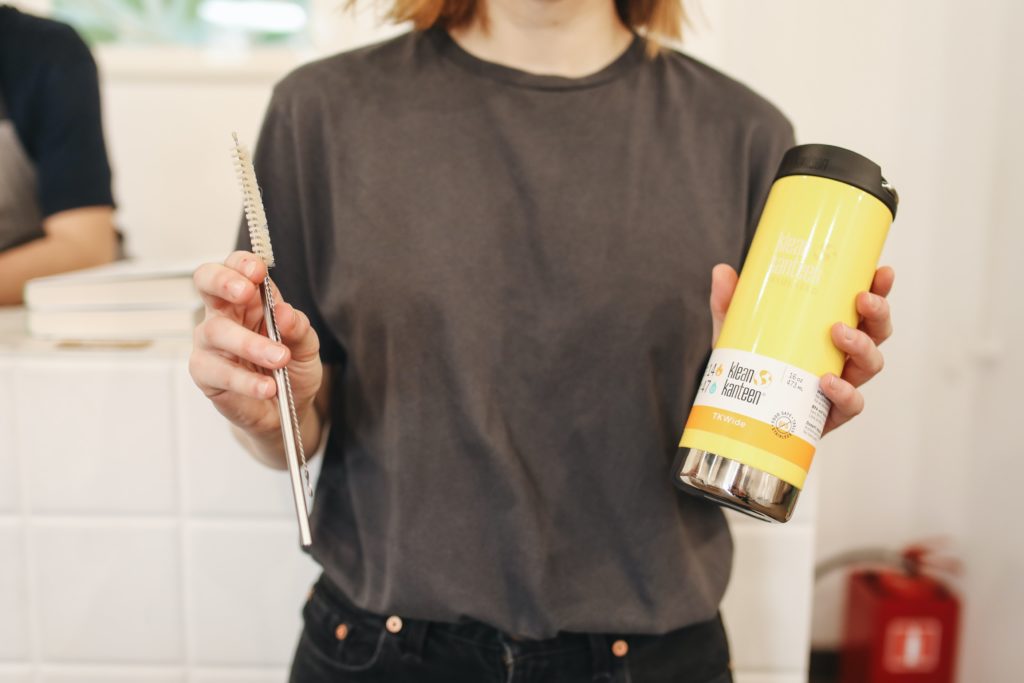How To Go Zero Waste

Did you know the world creates more than 2 billion tons of waste every year? The highest-income countries create a third of that waste, even though they only account for 16% of the population. Those numbers continue to grow, with the world creating more waste year by year.
Our current levels of waste creation isn’t sustainable. Landfills release a lot of methane gas, and about 40% of the world’s trash is burned, which releases a lot of carbon dioxide. Both those gases are greenhouse gases, which cause changes in our atmosphere that negatively affect our planet (rising temperatures, for example). Trash is constantly in the environment, which can injure or be consumed by animals, sometimes with fatal results. And us humans? Increased emissions have an impact on our health, from asthma to different types of cancer.
So, what can we do about it? Lots of things, as it turns out. One way, while not necessarily easy, is to go zero waste.
Tips For Going Zero Waste
Use the Five R’s.
Do you remember the mantra from middle school? Reduce, reuse, and recycle? Well, it’s getting an upgrade. An idea from Bea Johnson is the 5R’s: “Refuse what you do not need. Reduce what you do need. Reuse what you consume. Recycle what you cannot refuse, reduce, or reuse. And rot (compost) the rest.”
Some examples to help you get started:
Refuse little things, like plastic straws or business cards.
Reduce the amount of paper you use by using technology for your note-taking needs. Or, reduce how much processed food you eat to reduce the amount of packaging you use.
Reuse! Instead of recycling items such as glass jars, clean them out, and use them for storage. They can be used for pasta, rice, flour, toothbrushes, or even as takeaway containers. This is especially helpful for those on a budget, as it gives you storage options without buying containers.
Recycle cardboard, metals, or old papers. Maybe turn an old skirt into a tote bag, an old scarf into a skirt, or an old t-shirt into some rags. Use can even use old sweaters to make beds for your pets.
Rot or compost. Composting can be daunting, but there are a few ways to go about it. Start with a compost bin. To do that, you want to start with bare earth, followed by a layer of hay or sticks, followed by what you’re composting. For that layer of your composted materials, you’ll want to alternate between moist and dry. From there, add a nitrogen source, cover, and add as you need. Here is a more detailed guide. Don’t have a yard or any space to compost in? No problem! Share Waste can connect you to people or organizations in your community that can help.

Start Small.
Going zero waste can be daunting, and will take time. Going from normal waste to zero waste won’t happen overnight, but there are small steps you can take to gradually decrease waste.
Audit your trash. Figure out what you’re creating waste with, and why. Do you buy a lot of coffee from coffee shops? Get takeout a lot? Throw out a lot of food? Figure out your patterns and change any waste-creating habits to more sustainable alternatives, like bringing a reusable travel mug to your next coffee run.
Invest in a reusable water bottle or even just use the one hiding away at the back of the cabinet. This will help the environment, help you stay hydrated, and in my experience, may even remind you to drink water instead of that soda from the vending machine.
Use reusable bags when grocery shopping to help decrease plastic waste. Most grocery stores have bags you can buy, or you can buy some cotton totes that may last longer.
Use reusable straws. Metal and glass straws are all the rage right now, but there’s also hard plastic, silicone, and bamboo straws. I’m partial to stainless steel myself, but it really comes down to preference. Here’s a good low-down on different straws.
Use your food scraps. You can make soup from leftover vegetables and meats, turn fruit into smoothies or sorbet, or freeze bread for croutons. Here’s a good guide on what else to do with scraps.
Eat less takeout. Getting takeout creates a lot of waste, with restaurants being accountable for 72% of disposable packaging. So, start cooking or meal prepping for the week. I have found it really helpful to make myself a menu for the week: not only do I know what to cook, but I also know what exactly I need to buy.
Switch products as you run out. For example, if you buy plastic containers of sugar or flour instead of the paper bags, next time you run out, just keep the container and fill with one of the bags instead. Or, if you have a stock of disposable razors, finish those before investing in a reusable.
Don’t get discouraged.
Finally, take every day as it is. Going zero-waste takes time and effort. It definitely won’t happen overnight, and it’s okay if you never fully get there. The main goal for all of us is to try, try to make that difference, no matter how small. Do what you can with your resources, and get creative.


Leave a Reply